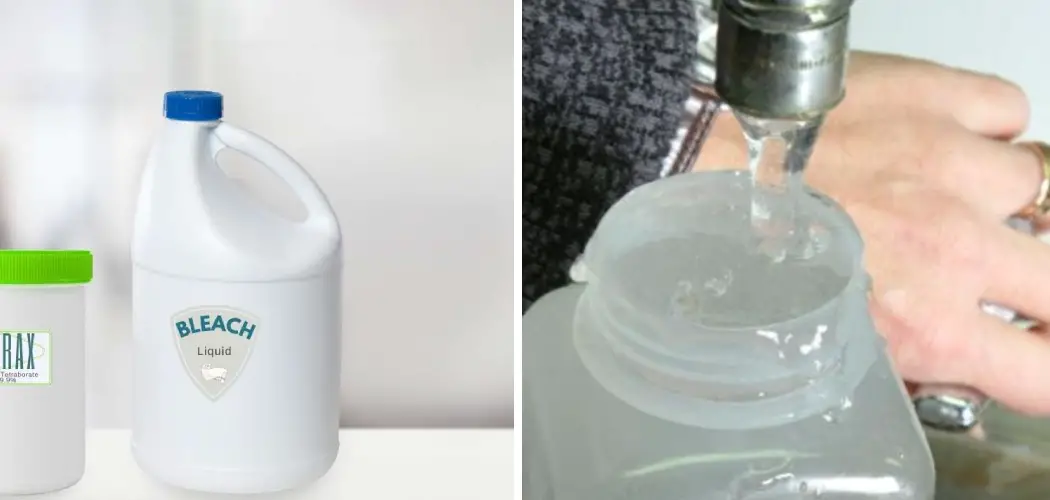When it comes to maintaining a septic system, understanding the implications of using bleach is crucial. While bleach is often used for its powerful disinfecting properties in households, its impact on septic systems can be detrimental. Bleach can disrupt the natural balance of bacteria essential for breaking down waste in septic tanks, leading to inefficiencies and potential system failures.
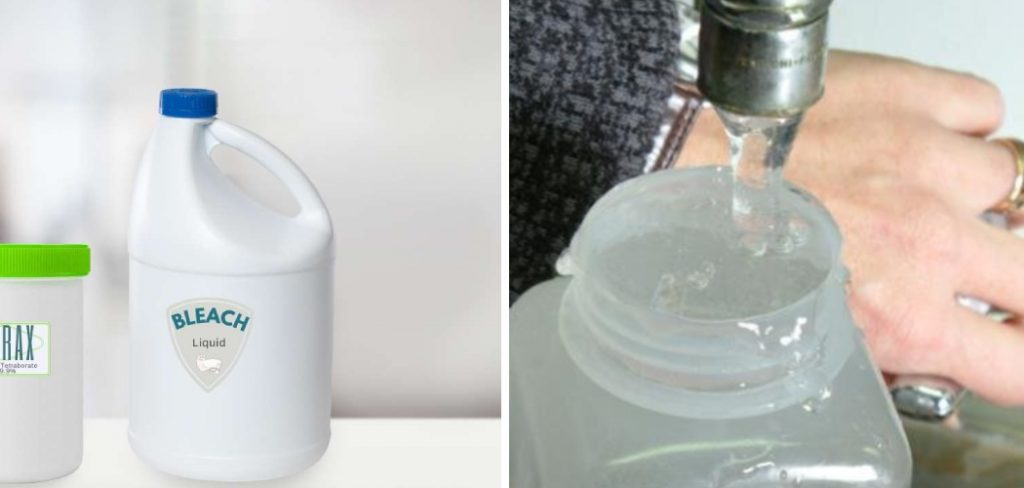
This document will explore effective methods for neutralizing bleach to ensure the longevity and functionality of your septic system while still allowing for cleaning and disinfecting in your home. Keep reading on to find out how to neutralize bleach in septic system!
The Impact of Bleach on Septic Systems
Bleach, primarily composed of sodium hypochlorite, can have significant adverse effects on septic systems. When introduced into the system, bleach kills both harmful and beneficial bacteria, which are vital for the breakdown of solids in the septic tank.
This disruption can lead to a buildup of waste, resulting in clogs, backups, and an increased risk of system failure. Furthermore, the reduction of bacteria can hinder the overall treatment of effluent, potentially causing environmental issues when the treated wastewater is dispersed into drain fields.
Prolonged usage of bleach not only compromises the septic system’s efficiency but can also lead to costly repairs and maintenance in the future.
Why Neutralizing Bleach is Important
Neutralizing bleach is critical for the health and functionality of a septic system. By doing so, homeowners can preserve the delicate balance of bacteria necessary for effective waste breakdown. When bleach enters the septic tank, it significantly diminishes the population of these beneficial microorganisms, ultimately impairing the system’s ability to process waste and leading to potential backups and clogs.
Neutralizing bleach not only helps maintain the efficiency of the septic system but also reduces the risk of costly repairs and environmental harm caused by improperly treated effluent.
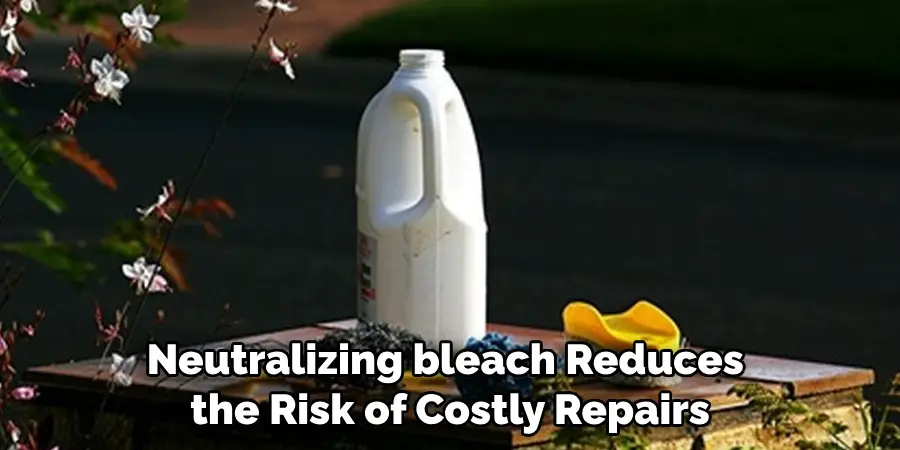
10 Methods How to Neutralize Bleach in Septic System
1. Stop Using Bleach Immediately
The first step in addressing bleach contamination in your septic system is to stop using bleach products immediately. Bleach, a strong disinfectant, can kill the beneficial bacteria in the septic tank that are essential for breaking down organic waste. Cease all use of bleach-based cleaners, laundry detergents, and other products containing chlorine to prevent further disruption of the bacterial balance. Switching to alternative cleaning products that are septic-safe will help protect the health of your septic system and minimize further damage.
2. Increase Water Usage
One of the simplest ways to dilute and flush out bleach from your septic system is to increase water usage. By running more water through the system, you can help dilute the bleach and flush it out of the tank more quickly. Take longer showers, run the dishwasher, and do extra loads of laundry to ensure that the bleach is thoroughly diluted and carried away from the septic tank. This method helps to reduce the concentration of bleach in the system and minimizes its impact on the bacterial activity.
3. Add Beneficial Bacteria
To replenish the beneficial bacteria that may have been affected by the bleach, consider adding a bacterial additive to your septic system. These additives contain live bacteria and enzymes that can help restore the natural microbial balance in the tank.
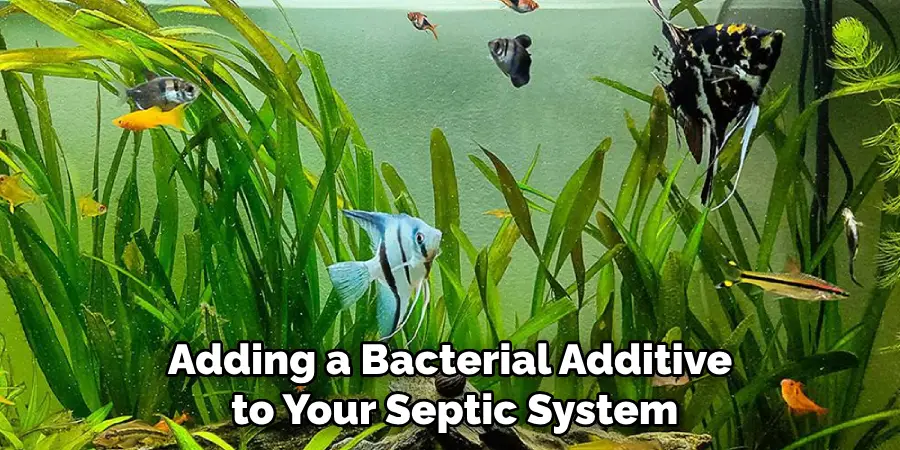
Choose a product specifically designed for septic systems and follow the manufacturer’s instructions for dosage and application. Adding beneficial bacteria can help accelerate the breakdown of waste and restore the efficiency of your septic system.
4. Use Enzyme Cleaners
Enzyme cleaners are another effective method for neutralizing bleach and promoting the health of your septic system. Unlike bleach, enzyme cleaners work by breaking down organic matter through enzymatic action, which supports the natural digestion process in the septic tank. Apply enzyme cleaners according to the product instructions, and allow them to work in the system for the recommended amount of time. This method helps to enhance the breakdown of waste and mitigate the effects of bleach on the bacterial population.
5. Inspect and Pump the Septic Tank
Regular inspection and pumping of the septic tank are essential for maintaining its health and functionality. If you have recently used a significant amount of bleach, it’s a good idea to schedule a professional inspection and pumping of the tank.
A septic service professional can assess the condition of the tank, remove any accumulated sludge, and ensure that the system is functioning properly. Pumping the tank can help remove any remaining bleach and restore the system’s efficiency.
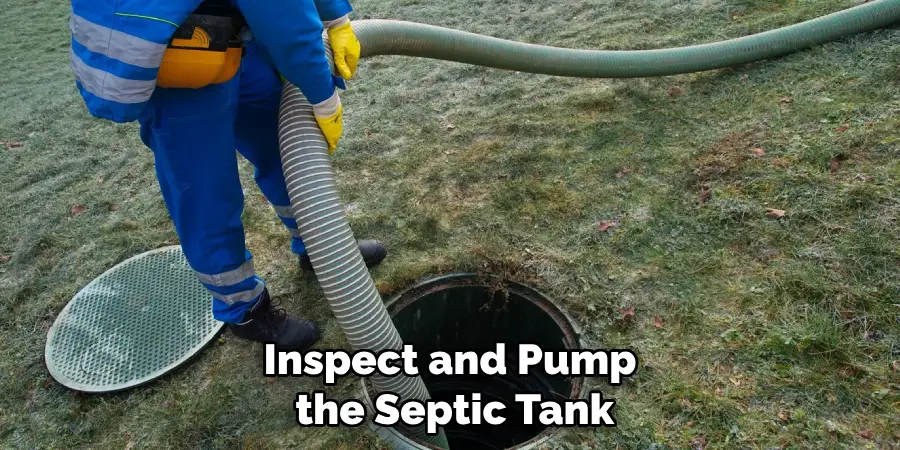
6. Monitor System Performance
Keep a close eye on the performance of your septic system following bleach exposure. Watch for signs of system issues, such as slow drainage, foul odors, or wastewater backups. Monitoring the system will help you detect any problems early and address them promptly. If you notice any unusual symptoms or if the system seems to be struggling, consult a septic professional for further evaluation and advice.
7. Avoid Harsh Chemicals
To prevent future disruptions to your septic system, avoid using harsh chemicals and disinfectants that can adversely affect the bacterial balance. Instead, opt for septic-safe cleaning products and natural alternatives. Many eco-friendly cleaning products are designed to be gentle on septic systems while still providing effective cleaning power. By using less harmful products, you can help maintain the health of your septic system and prevent further damage.
8. Promote Soil Absorption
Encouraging proper soil absorption around your septic system can help mitigate the effects of bleach exposure. Ensure that the soil surrounding the septic drain field is well-aerated and free of excess moisture. Proper soil absorption helps to distribute wastewater evenly and promote the natural filtration process. Avoid compacting the soil or planting large trees near the drain field, as these factors can impact the effectiveness of the system.
9. Educate Household Members
Educate all household members about the importance of using septic-safe products and avoiding bleach in the system. Ensure that everyone understands the potential impact of bleach and other harsh chemicals on the septic tank. By promoting responsible use of household cleaners and encouraging awareness, you can help protect the health of your septic system and prevent future issues.
10. Consult a Septic Professional
If you are unsure about how to handle bleach exposure in your septic system or if you encounter persistent problems, consult a professional septic service provider.
A septic professional has the expertise and tools to assess the condition of your system, recommend appropriate treatments, and address any concerns you may have. Professional guidance ensures that your septic system receives the necessary care and maintenance to function effectively.
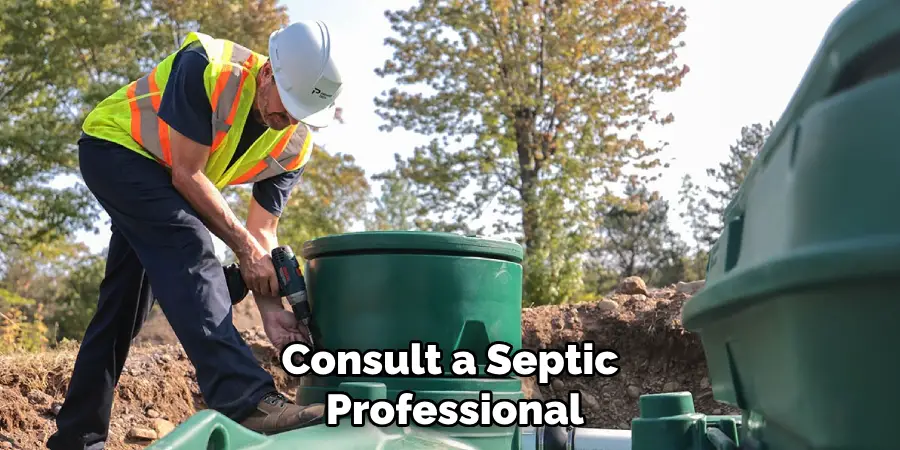
Things to Consider When Caring for Your Septic System
- Know Your System’s Capacity
Understanding the capacity of your septic tank is crucial for preventing overloading. Be aware of how many people live in your home and how much water they typically use to ensure that the system operates efficiently.
- Regular Maintenance Schedules
Establish a routine maintenance schedule for pumping and inspecting your septic system. Regular check-ups can help catch potential issues early and prolong the life of your system.
- Use Water Wisely
Practice water conservation to reduce the strain on your septic system. Simple measures like fixing leaks, taking shorter showers, and using water-efficient appliances can significantly benefit your system.
- Monitor What Goes Down the Drain
Be cautious about what substances you dispose of in your sink and toilet. Avoid flushing non-biodegradable items, chemicals, or excessive food waste, as these can disrupt the natural processes within your septic system.
- Protect Your Drain Field
Ensure your drain field is not overloaded with heavy loads, such as vehicles or large structures. This area needs to remain accessible and undisturbed to function properly.
Common Mistakes to Avoid
- Using Non-Septic Safe Products
One of the most critical mistakes homeowners make is using cleaning and personal care products that are not septic-safe. Harsh chemicals can kill beneficial bacteria in the septic tank, disrupting the natural breakdown of waste. Always check labels and opt for products specifically designed for septic systems.
- Neglecting Regular Maintenance
Failing to schedule routine maintenance, such as inspections and pump-outs, can lead to significant issues down the line. Regular maintenance allows for early detection of potential problems, ensuring your system operates efficiently and prolonging its lifespan.
- Improper Disposal of Waste
Many individuals mistakenly dispose of items like fats, oils, grease, non-biodegradable materials, or toxic substances down the drain. These items can clog pipes and disrupt the natural processes of your septic system, leading to backups and costly repairs.
- Ignoring Soil Conditions Around the Drain Field
Poor soil conditions can hinder the absorption and filtration processes. Homeowners sometimes overlook the importance of maintaining healthy soil around the drain field, such as not compacting the soil or planting invasive root systems nearby.
- Overloading the System
Using excessive water at once can overwhelm your septic tank, especially if you have a large household or host gatherings. Try to spread out water usage throughout the day to prevent overloading the system.
Conclusion
In conclusion, neutralizing bleach in a septic system involves a combination of immediate actions, ongoing maintenance, and preventive measures. By stopping the use of bleach, increasing water usage, adding beneficial bacteria, and using enzyme cleaners, you can help mitigate the impact of bleach and restore the health of your septic system. Thanks for reading, and we hope this has given you some inspiration on how to neutralize bleach in septic system!

